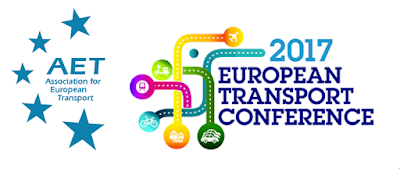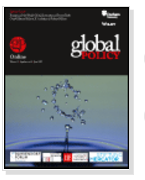Prólogo
Poco antes de la publicación de esta obra falleció en Roma el Profesor Stefano Rodotà, quien fuera presidente de la Autorità garante per la protezione dei dati personali en Italia (1997-2005) y todo un referente en la Unión Europea en todo cuanto se refiere a la protección, entre otros, de la privacidad de las personas. Desde muy temprano, mucho antes de que se decidiera incorporar un chip biométrico al pasaporte de los Estados Miembros de la UE, el profesor Rodotà venía advirtiendo sobre la irrupción de la biometría y las nuevas relaciones que planteaba entre el cuerpo físico y el cuerpo electrónico. “Il corpo fisico sta diventando una password”, afirmaba en el año 2004*, un objeto en movimiento, controlable desde la distancia en un modo que puede terminar por desvanecerse el sentido de la autonomía de la persona e, incluso, su dignidad. Más de una década después, si bien la expresión “tecnologías biométricas” no parece haberse extendido en exceso al lenguaje común, no resulta exagerado afirmar que vivimos rodeados de ellas. Algunos sistemas de verificación de la identidad biométrica han enrolado a grupos de personas que superan los centenares, en algunos casos los mil millones, como es el caso del pasaporte biométrico de la UE, el sistema de identidad Aadhaar de India o los sistemas de sufragio electoral de varios países de América del Sur. Otros, en apariencia más inofensivos, solicitan a las personas mostrar su dedo índice para acceder al smartphone, fichar en el puesto de trabajo o realizar pagos en la cantina del comedor escolar. Todos ellos son sistemas que, captando alguna característica particular del cuerpo de una persona (algo característico de una huella dactilar o en el rostro de una persona, o bien del modo en el que escribe en un teclado o mueve su cuerpo al caminar) proceden a reconocer la identidad de ésta.
En el año 2005, requerido por la Comisión de Libertades Civiles, Justicia y Asuntos de Interior del Parlamento Europeo, el IPTS (Institute for Prospective Technological Studies) reflejó en un informe lo que podría ser, en 2015, el día a día de una familia en la que los sistemas de reconocimiento biométrico formasen parte de la vida cotidiana: sistema de pago biométrico en la cafetería de la escuela, coches que arrancan con la huella dactilar, guarderías que verifican la identidad de las personas que recogen a los bebés, fogones de cocina que sólo funcionan si el usuario es adulto, controles de iris en los aeropuertos… esos y muchos otros dispositivos están ya en el mercado o en fases avanzadas de desarrollo. Como denuncian las autoridades de protección de datos, algunas asociaciones de derechos civiles y juristas como la doctora Leire Escajedo San-Epifanio, autora de este trabajo, sigue pendiente, sin embargo, una adaptación de la normativa que proteja adecuadamente la libertad de las personas y el respeto al cuerpo humano ante esta irrupción acelerada.
Mi amiga y colega, Leire Escajedo San-Epifanio, autora de esta monografía, es una jurista experta en el área de Derecho constitucional y con una formación en Antropología forense que le ha llevado a obtener el Doctorado cum laude en Ciencias Biológicas, detalla el modo en el que las tecnologías de reconocimiento biométrico nos han invadido en estos últimos años. En esta obra describe las bases del funcionamiento de sus sistemas, su diversidad y particularidades, así como sus riesgos y limitaciones. Sobre esa base, y con una detallada relación de escenarios en los que se están aplicando a día de hoy a lo largo y ancho del planeta, la autora profundiza en las implicaciones que el uso de estas tecnologías tiene para la privacidad, la dignidad y otros derechos fundamentales.
Me permito destacar tres cualidades de este trabajo. En primer lugar, que se adentra en una problemática jurídica novedosa, necesitada de atención urgente, y a la que la Ciencia jurídica está encontrando dificultad para hacerle frente por su compleja vinculación con la Medicina y la Antropología forense. Destaca, en segundo lugar, la calidad metodológica del trabajo, tanto en lo que se refiere al diseño de la investigación y al manejo de las fuentes bibliográficas y documentales (procedentes de diferentes disciplinas y países), como en la construcción del informe final de resultados que aquí se presenta. Por último, y no menos relevante, destacaré que la autora dedica especial atención a las propuestas de solución de los problemas que las tecnologías biométricas plantean y aporta a ese conjunto sus propias propuestas.
La construcción de sistemas de identificación de las personas ha sido, desde hace siglos, un arma de doble filo que siempre ha sido contemplado con recelo por los defensores de los derechos civiles. Los sistemas de identificación resultan, sin duda, imprescindibles para algunas facetas de la vida social pero su expansión sin crítica genera peligros de excesivo control, estigmatización y discriminación, como lamentablemente ha sucedido en algunos regímenes totalitarios no tan lejanos en el tiempo. La novedad más destacada que a la identificación de las personas aportan las tecnologías biométricas proviene de la conjunción de dos componentes: su vinculación con el cuerpo de las personas y la velocidad que alcanzan gracias a la digitalización. La autora se detiene a exponer con detalle en qué consisten estos sistemas, cuáles son sus vínculos y sus principales diferencias respecto de otros sistemas de identificación. Asimismo, y sobre la base de esos dos novedosos componentes (corporeidad y digitalización), aborda la autora cómo de lejos estamos de cumplir la llamada promesa biométrica: si escogemos una característica humana lo suficientemente singularizante y somos capaces de construir sobre su base un sistema fiable de reconocimiento automatizado, en cuestión de segundos seremos capaces de diferenciar a un ser humano como único entre el resto de habitantes del Planeta.
Una vez expuesto el estado actual de la tecnología disponible, desde la perspectiva de los derechos fundamentales analiza los riesgos que en el diseño y funcionamiento de estos sistemas, que como se verá son muchos y diversos, se plantean para las personas. En una sociedad democrática, ¿es legítimo y proporcionado emplear tecnologías biométricas de reconocimiento de la identidad de las personas en cualquier escenario operativo y para cualquier fin? Sin anticiparme al detalle de las conclusiones, estoy seguro de que los lectores ya imaginarán que la respuesta es no. La Carta de Derechos Fundamentales de la UE y el acervo jurídico común europeo exigen justificar adecuadamente cualquier intromisión en la privacidad de las personas, presumiendo que in dubio tales intromisiones habrán de considerarse ilegitimas y desproporcionadas. Qué decir, por lo tanto, de unas tecnologías informatizadas –en algunos casos, además, funcionando en red- que construyen sus sistemas de identificación invadiendo la corporeidad de las personas y exponiendo potencialmente datos tan sensibles como, entre otros, los relativos a la salud, el origen étnico o la identidad sexual de las personas.
Tengo conocimiento directo de la contribución académica y profesional de la doctora Leire Escajedo San-Epifanio en temáticas que, si bien en apariencia diversas a causa de su amplio y fecundo de interés investigador, coinciden en afrontar la problemática jurídica que en el ámbito de la gobernanza y los derechos fundamentales plantean los avances biocientíficos y biotecnológicos. Formada en el Departamento de Derecho Constitucional e Historia del Pensamiento de la Universidad del País Vasco y en la Cátedra Interuniversitaria de Derecho y Genoma Humano (Universidad de Deusto – UPV/EHU), de la que fue miembro hasta 2010, la doctora Escajedo San-Epifanio obtuvo el Premio de Investigación de la Sociedad Internacional de Bioética en el año 2006 por un trabajo sobre el avance de las biotecnologías y fue coautora del libro “La Ética y el Derecho ante los Avances de la Biomedicina”, y de la Enciclopedia de Bioética y Bioderecho dirigida por el prestigioso jurista, experto en Derecho Biomédico, D. Carlos M. Romeo Casabona. Sus trabajos, en español, francés, inglés y portugués, han sido objeto de publicación en obras colectivas y revistas de reconocido prestigio (como es el caso de La Ley, la Revista de Derecho y Genoma Humano, la Revista de Derecho Sanitario, la Revista de Derecho Político, la Revue du Marché Commun et de l’Union Européene o la Revue Générale de Droit International Public, entre otras). Personalmente, he tenido ocasión de colaborar directamente en tres obras que ha coeditado y de las que es coautora: “Envisioning a Future without Food waste and Food Poverty: Societal Challenges” (Wageningen Academic Publishers, 2015), Towards a New Regulatory Framework for GMOs in the EU (Wageningen Academic Publishers, 2017) y Derecho a la alimentación y despilfarro alimentario: retos pendientes (Tirant lo Blanch, 2018).
Luis González Vaqué
W























